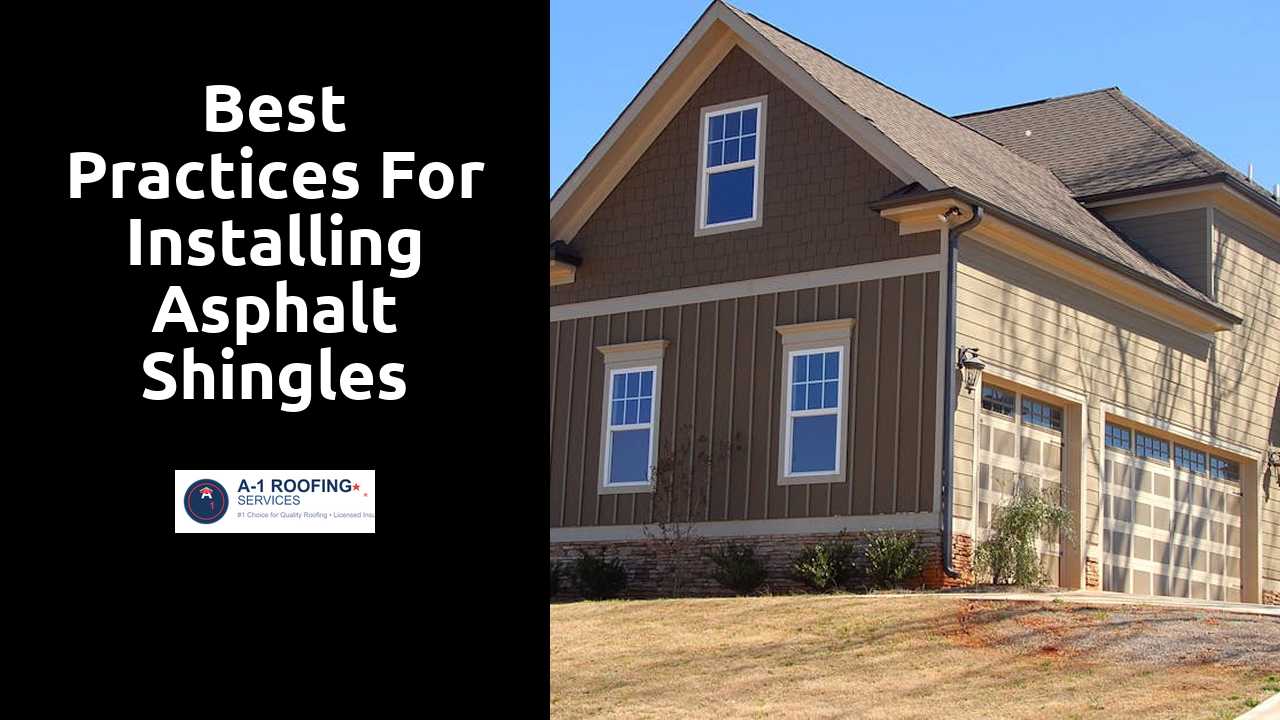
Best Practices for Installing Asphalt Shingles
Table Of Contents
Installing Underlayment
A quality underlayment serves as a critical layer beneath asphalt shingles, providing protection against moisture and acting as a barrier against wind. This material shields the roof deck from water infiltration, which can occur during rain or snow. Picking the right underlayment will safeguard the longevity of the shingles and the entire roofing system. Various types are available, including felt paper and synthetic options, each chosen based on specific climate conditions and personal preferences.
Installation of the underlayment requires careful attention to ensure complete coverage of the roof surface. Begin at the eaves, rolling out the material horizontally across the roof while allowing for proper overlaps where sheets meet. Secure the underlayment using cap nails or staples, taking care to follow the manufacturer's specifications for fastener placement and spacing. Ensuring that the underlayment is laid flat without wrinkles or bubbles enhances its effectiveness and simplifies the subsequent installation of shingles.
See here for more great tips.
Benefits of a Quality Underlayment
A quality underlayment serves as a vital barrier against moisture, protecting both the roof structure and the underlying materials. It helps to prevent water intrusion caused by leaks or condensation, which can lead to mold growth and deterioration over time. Additionally, a good underlayment can improve energy efficiency by creating an insulating layer that contributes to temperature regulation within the attic space.
Another benefit of using high-quality underlayment is enhanced durability and performance of the roofing system. It can provide resistance to wind uplift, reducing the risk of shingle blow-off during severe weather events. Good underlayment materials are typically designed to withstand the elements, further extending the life of the roof and minimizing the need for repairs. As a result, investing in a reliable underlayment not only provides immediate protection but also contributes to the long-term integrity of the roofing structure.
Proper Nailing Techniques
Proper nailing techniques are crucial for the durability and performance of asphalt shingles. Each shingle should be fastened according to the manufacturer's specifications to ensure a secure installation. Typically, four to six nails per shingle are recommended, depending on the shingle type and local wind conditions. Nail placement should be positioned just above the shingle’s adhesive strip to optimize hold while avoiding penetration that could create leaks.
Ensuring that nails are driven straight and flush with the shingle surface is essential. Overdriving nails can damage the shingles, while underdriving them might lead to inadequate attachment. Additionally, it is important to avoid using galvanized nails, since they may not provide the necessary rust resistance needed for long-term performance. Choosing the right type of nails suited for the shingle materials will enhance overall stability and protect the roof from wind uplift in challenging weather conditions.
Best Practices for Secure Attachment
Secure attachment of asphalt shingles is crucial for the longevity of a roofing system. Begin by ensuring that the shingles are aligned properly to achieve an aesthetically pleasing appearance and optimal performance. Position each shingle according to the manufacturer's specifications, paying close attention to the specified exposure. This technique helps mitigate the risk of water infiltration and prevents potential damage during severe weather events.
Proper nailing techniques play a critical role in the secure attachment of shingles. Nails should be driven straight and flush with the surface of the shingles to prevent tearing or damage. A minimum of four nails per shingle is recommended, but local building codes may require additional fasteners in specific areas. Always utilize corrosion-resistant nails, as these will provide better durability and longevity, particularly in areas prone to harsh weather conditions.
Ventilation Considerations
Adequate ventilation plays a crucial role in maintaining the integrity of an asphalt shingle roof. Proper airflow helps regulate temperature in the attic, which can prevent ice dam formation in colder months and reduce excessive heat buildup during the summer. Without sufficient ventilation, moisture may accumulate, leading to mold growth and damaging structural elements, ultimately shortening the roof's lifespan.
To ensure effective ventilation, homeowners should consider installing ridge vents and soffit vents. A balanced ventilation system allows cool air to enter through the soffits while hot air escapes through the ridge vents. This natural airflow not only prolongs the life of the shingles but also enhances overall energy efficiency by regulating indoor temperatures. Regular maintenance is essential to keep these vents clear of debris and functioning effectively.
Ensuring Adequate Airflow for Longevity
Proper ventilation serves as a cornerstone for the longevity of asphalt shingle roofs. Adequate airflow minimizes heat and moisture buildup in the attic space, reducing the risk of mold, mildew, and structural damage. The temperature regulation provided by good ventilation extends the lifespan of both shingles and the underlying roofing structure. It’s essential to maintain a balance between intake and exhaust vents to create an effective airflow system.
Incorporating ridge vents and soffit vents can facilitate a free flow of air, allowing warm air to escape while cooler air enters from below. This natural circulation helps keep attic temperatures in check, especially in the summer months. Beyond improving lifespan, proper ventilation also enhances energy efficiency, leading to insulated comfort within the home. Homeowners should consider consulting professionals to assess existing ventilation and make necessary adjustments for optimal performance.
Related Links
Common Mistakes in Shingle Roofing InstallationShingle Installation for Steep-Slope Roofs